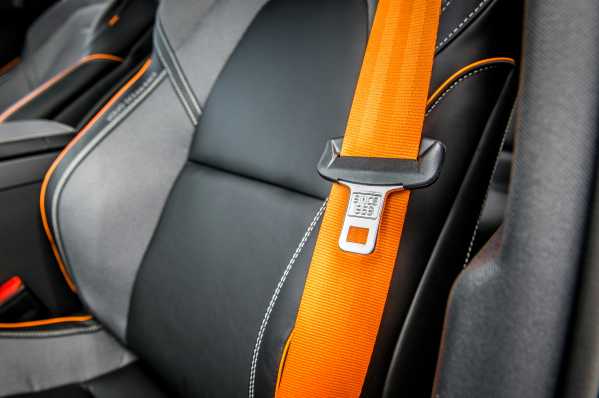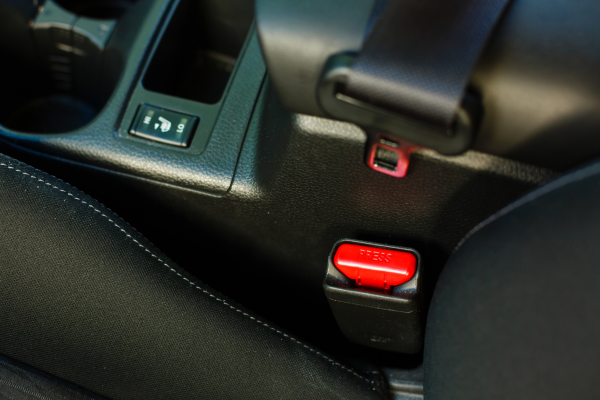Vehicle Safety
Fixing a Stuck Seat Belt: Your DIY Guide

Fixing a Stuck Seat Belt: Your DIY Guide
A malfunctioning seat belt presents both an inconvenience and a critical safety concern. This comprehensive guide will walk you through the appropriate steps to address a stuck seat belt, while emphasizing when professional intervention becomes necessary.
Initial Assessment
Before attempting any repairs, it is essential to identify the specific nature of the malfunction. The most common issues include:
- Retraction failure, where the belt fails to return to its housing properly.
- Locking mechanism engagement, preventing the belt from being pulled out.
- Twisted belt material causing mechanical resistance.
- Physical obstruction within the mechanism.
"Approximately 60% of seat belt issues can be resolved through proper inspection and basic maintenance. However, it's crucial to recognize when a problem requires professional attention." Mark, Head of Safety Systems at Advanced Auto Technologies
Safe Diagnostic Procedures
Begin your inspection in well-lit conditions, ensuring your vehicle is parked on level ground with the parking brake engaged. Examine the entire length of the belt, paying particular attention to:
- The belt material's condition.
- The retraction mechanism's housing.
- The connection points and anchors.
- The buckle mechanism and its components.
"Never disassemble any component of the seat belt system. The internal mechanisms are precisely calibrated and can be dangerous if mishandled." Sarah, Certified Vehicle Safety Inspector
Addressing Common Issues
Retraction Problems
When dealing with retraction issues, follow this methodical approach:
- Fully extend the belt to its maximum length, checking for any visible twists or debris.
- Inspect the belt's entire surface using a bright light.
- Clean the belt using warm water and mild soap if necessary.
- Allow the belt to dry completely before testing retraction.
"In my 15 years of experience, improper cleaning methods have caused as many problems as they've solved. Always avoid harsh chemicals or abrasive materials." Robert, Automotive Safety Specialist
Locked Mechanism Resolution
For a locked mechanism, implement these steps:
- Gently pull the belt outward until you meet resistance.
- Allow it to retract slightly.
- Attempt to pull it out again slowly.
- Repeat this process several times if necessary.
Important: If the mechanism remains locked after three attempts, professional inspection is required.
Professional Intervention Indicators
Certain conditions necessitate immediate professional attention:
- Visible fraying or damage to the belt material.
- Unusual sounds from the retraction mechanism.
- Impact damage from accidents.
- Age-related deterioration.
- Electronic pretensioner malfunctions.
"Modern seat belt systems integrate with multiple vehicle safety features. Attempting repairs beyond basic maintenance can compromise the entire safety system." Dr. Watson, Vehicle Safety Research Director
Preventive Maintenance
To minimize future issues, implement these preventive measures:
- Regular inspection of all seat belt components.
- Prompt cleaning of any spills or contamination.
- Proper usage habits, avoiding sharp pulls or twists.
- Documentation of any issues or repairs.
Cost Considerations
Professional repair costs typically range from $150$500, depending on vehicle make and model. However, as James Wilson, Insurance Safety Coordinator, points out:
"The cost of repair is insignificant compared to the potential consequences of seat belt failure during an accident."
Legal Considerations
Be aware that in most jurisdictions, driving with a malfunctioning seat belt is:
- Illegal
- Potentially invalidates vehicle insurance
- Subject to traffic citations
- A liability risk
Conclusion
Addressing seat belt issues promptly is crucial for vehicle safety. While some minor problems can be resolved through careful inspection and basic maintenance, err on the side of caution when considering repairs. Remember that seat belts are essential safety devices that require proper functionality to protect vehicle occupants.
"Your seat belt is your primary defense in an accident. When in doubt, always consult a professional. The cost of prevention is always lower than the cost of regret." Michael, Certified Technician
Vehicle Maintenance
Repairing Your Car's Seat Belt: A Step-by-Step Guide
Vehicle Safety
Demystifying Airbag Modules: Your Questions Answered
Vehicle Safety
Fixing a Stuck Seat Belt: Your DIY Guide
Fixing a Stuck Seat Belt: Your DIY Guide
A malfunctioning seat belt presents both an inconvenience and a critical safety concern. This comprehensive guide will walk you through the appropriate steps to address a stuck seat belt, while emphasizing when professional intervention becomes necessary.
Initial Assessment
Before attempting any repairs, it is essential to identify the specific nature of the malfunction. The most common issues include:
- Retraction failure, where the belt fails to return to its housing properly.
- Locking mechanism engagement, preventing the belt from being pulled out.
- Twisted belt material causing mechanical resistance.
- Physical obstruction within the mechanism.
"Approximately 60% of seat belt issues can be resolved through proper inspection and basic maintenance. However, it's crucial to recognize when a problem requires professional attention." Mark, Head of Safety Systems at Advanced Auto Technologies
Safe Diagnostic Procedures
Begin your inspection in well-lit conditions, ensuring your vehicle is parked on level ground with the parking brake engaged. Examine the entire length of the belt, paying particular attention to:
- The belt material's condition.
- The retraction mechanism's housing.
- The connection points and anchors.
- The buckle mechanism and its components.
"Never disassemble any component of the seat belt system. The internal mechanisms are precisely calibrated and can be dangerous if mishandled." Sarah, Certified Vehicle Safety Inspector
Addressing Common Issues
Retraction Problems
When dealing with retraction issues, follow this methodical approach:
- Fully extend the belt to its maximum length, checking for any visible twists or debris.
- Inspect the belt's entire surface using a bright light.
- Clean the belt using warm water and mild soap if necessary.
- Allow the belt to dry completely before testing retraction.
"In my 15 years of experience, improper cleaning methods have caused as many problems as they've solved. Always avoid harsh chemicals or abrasive materials." Robert, Automotive Safety Specialist
Locked Mechanism Resolution
For a locked mechanism, implement these steps:
- Gently pull the belt outward until you meet resistance.
- Allow it to retract slightly.
- Attempt to pull it out again slowly.
- Repeat this process several times if necessary.
Important: If the mechanism remains locked after three attempts, professional inspection is required.
Professional Intervention Indicators
Certain conditions necessitate immediate professional attention:
- Visible fraying or damage to the belt material.
- Unusual sounds from the retraction mechanism.
- Impact damage from accidents.
- Age-related deterioration.
- Electronic pretensioner malfunctions.
"Modern seat belt systems integrate with multiple vehicle safety features. Attempting repairs beyond basic maintenance can compromise the entire safety system." Dr. Watson, Vehicle Safety Research Director
Preventive Maintenance
To minimize future issues, implement these preventive measures:
- Regular inspection of all seat belt components.
- Prompt cleaning of any spills or contamination.
- Proper usage habits, avoiding sharp pulls or twists.
- Documentation of any issues or repairs.
Cost Considerations
Professional repair costs typically range from $150$500, depending on vehicle make and model. However, as James Wilson, Insurance Safety Coordinator, points out:
"The cost of repair is insignificant compared to the potential consequences of seat belt failure during an accident."
Legal Considerations
Be aware that in most jurisdictions, driving with a malfunctioning seat belt is:
- Illegal
- Potentially invalidates vehicle insurance
- Subject to traffic citations
- A liability risk
Conclusion
Addressing seat belt issues promptly is crucial for vehicle safety. While some minor problems can be resolved through careful inspection and basic maintenance, err on the side of caution when considering repairs. Remember that seat belts are essential safety devices that require proper functionality to protect vehicle occupants.
"Your seat belt is your primary defense in an accident. When in doubt, always consult a professional. The cost of prevention is always lower than the cost of regret." Michael, Certified Technician
Vehicle Maintenance
Repairing Your Car's Seat Belt: A Step-by-Step Guide
Vehicle Safety
Demystifying Airbag Modules: Your Questions Answered
Vehicle Safety
Fixing a Stuck Seat Belt: Your DIY Guide


